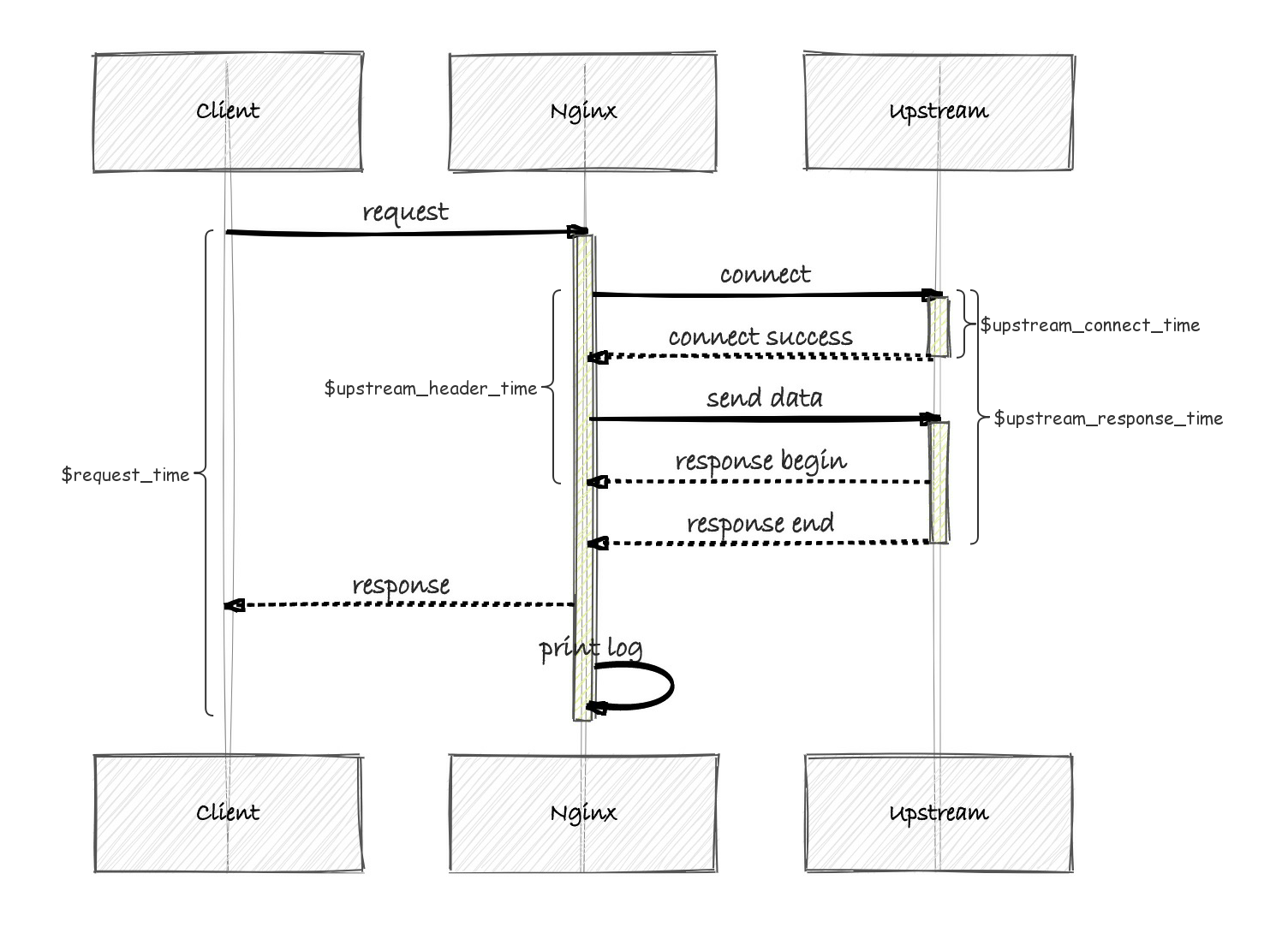nginx日志request_time 和upstream_response_time区别
1、request_time
官网描述:request processing time in seconds with a milliseconds resolution; time elapsed between the first bytes were read from the client and the log write after the last bytes were sent to the client 。 指的就是从接受用户请求的第一个字节到发送完响应数据的时间,即包括接收请求数据时间、程序响应时间、输出 响应数据时间。
2、upstream_response_time
官网描述:keeps times of responses obtained from upstream servers; times are kept in seconds with a milliseconds resolution. Several response times are separated by commas and colons like addresses in the $upstream_addr variable
是指从Nginx向后端(php-cgi)建立连接开始到接受完数据然后关闭连接为止的时间。
从上面的描述可以看出,$request_time肯定比$upstream_response_time值大,特别是使用POST方式传递参数时,因为Nginx会把request body缓存住,接受完毕后才会把数据一起发给后端。所以如果用户网络较差,或者传递数据较大时,$request_time会比$upstream_response_time大很多。
根据引贴对官网描述的翻译:
upstream_response_time:从 Nginx 建立连接 到 接收完数据并关闭连接
request_time:从 接受用户请求的第一个字节 到 发送完响应数据
2、场景
2.1 流程说明
如果把整个过程补充起来的话 应该是:
[1用户请求][2建立 Nginx 连接][3发送响应][4接收响应][5关闭 Nginx 连接]
那么 upstream_response_time 就是 2+3+4+5
但是 一般这里面可以认为 [5关闭 Nginx 连接] 的耗时接近 0
所以 upstream_response_time 实际上就是 2+3+4
而 request_time 是 1+2+3+4
二者之间相差的就是 [1用户请求]的时间。
来个网上的图说明情况:
参考网址:https://blog.csdn.net/zzhongcy/article/details/105819628





【推荐】国内首个AI IDE,深度理解中文开发场景,立即下载体验Trae
【推荐】编程新体验,更懂你的AI,立即体验豆包MarsCode编程助手
【推荐】抖音旗下AI助手豆包,你的智能百科全书,全免费不限次数
【推荐】轻量又高性能的 SSH 工具 IShell:AI 加持,快人一步
· 10年+ .NET Coder 心语,封装的思维:从隐藏、稳定开始理解其本质意义
· .NET Core 中如何实现缓存的预热?
· 从 HTTP 原因短语缺失研究 HTTP/2 和 HTTP/3 的设计差异
· AI与.NET技术实操系列:向量存储与相似性搜索在 .NET 中的实现
· 基于Microsoft.Extensions.AI核心库实现RAG应用
· 10年+ .NET Coder 心语 ── 封装的思维:从隐藏、稳定开始理解其本质意义
· 地球OL攻略 —— 某应届生求职总结
· 提示词工程——AI应用必不可少的技术
· Open-Sora 2.0 重磅开源!
· 周边上新:园子的第一款马克杯温暖上架